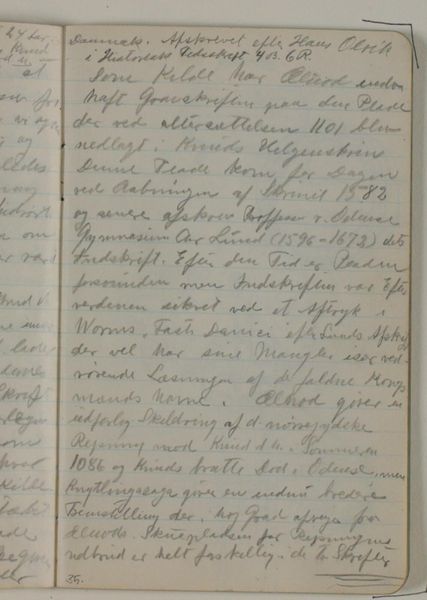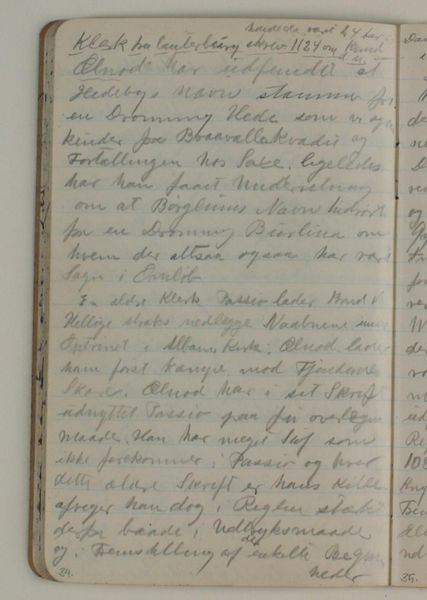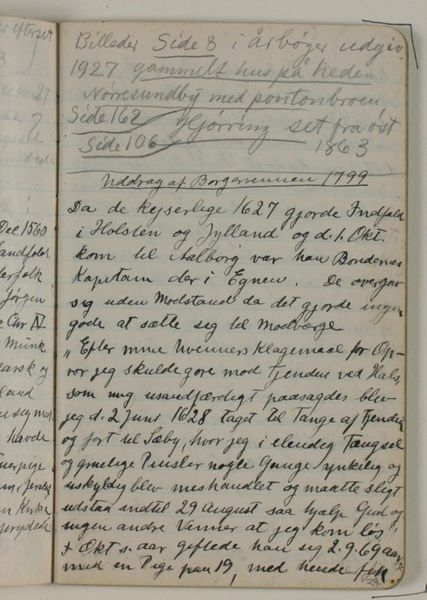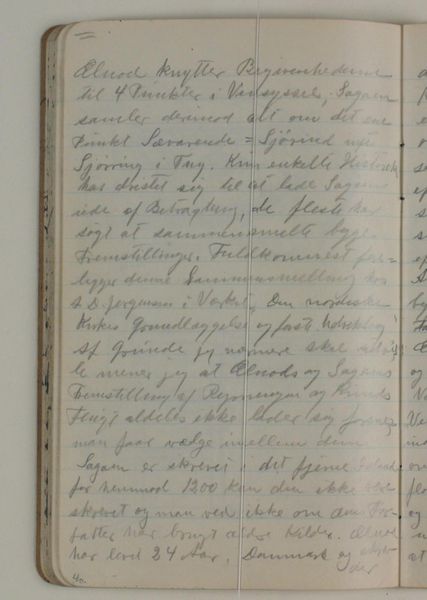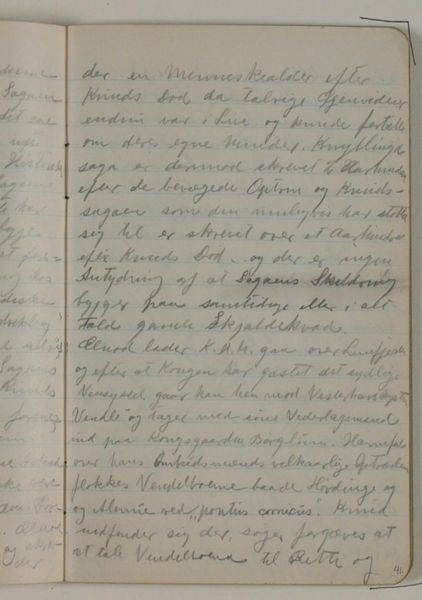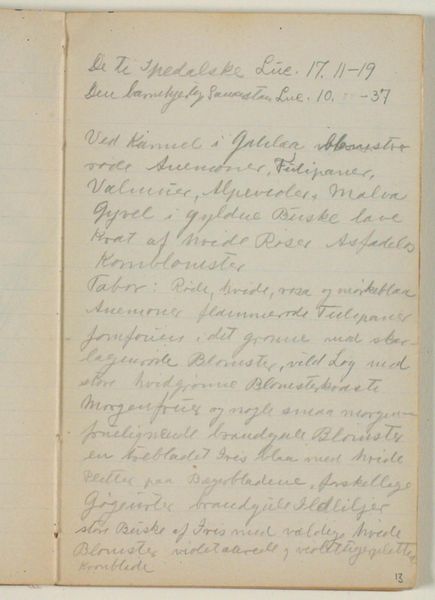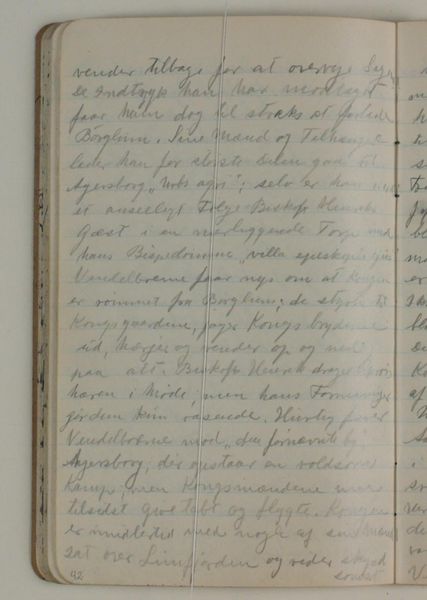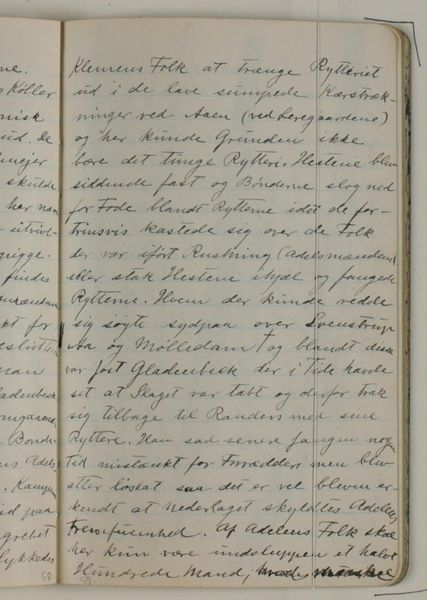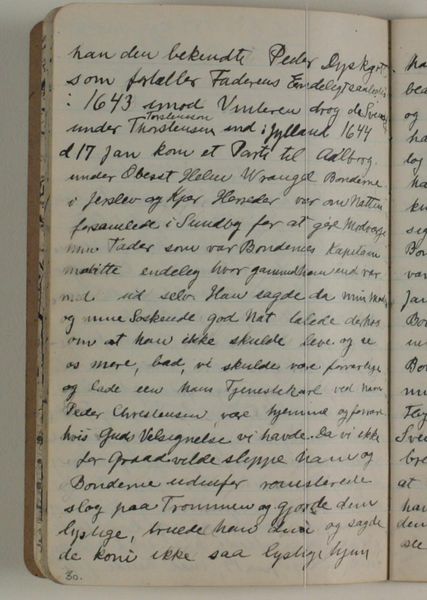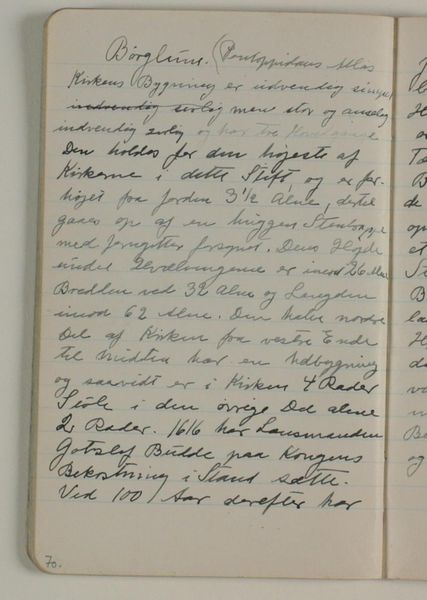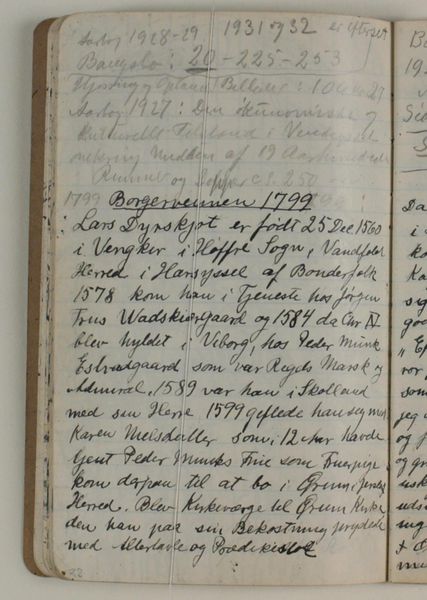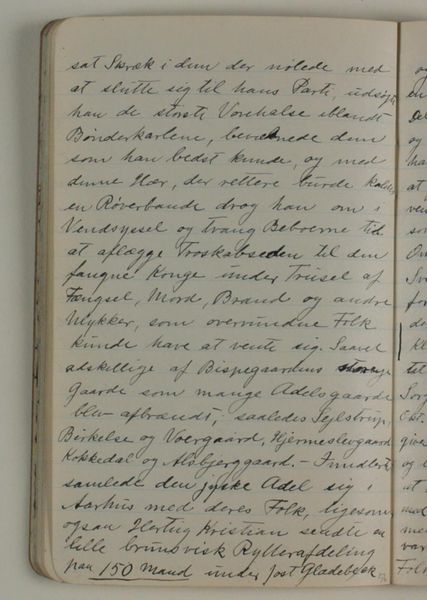
Litteraturhenvisninger til forskellige begivenheder tilknyttet Vendsyssels historie 1933 - 1934
0:00
0:00
drawing, paper, pencil
#
drawing
#
aged paper
#
hand-lettering
#
sketch book
#
hand drawn type
#
hand lettering
#
paper
#
personal sketchbook
#
pencil
#
sketchbook drawing
#
handwritten font
#
sketchbook art
#
small lettering
Dimensions: 175 mm (height) x 109 mm (width) (monteringsmaal), 175 mm (height) x 109 mm (width) (bladmaal)
Curator: Today we're looking at "Litteraturhenvisninger til forskellige begivenheder tilknyttet Vendsyssels historie," a pencil and paper drawing made between 1933 and 1934 by Niels Larsen Stevns. It resides in the collection of the SMK, Statens Museum for Kunst. Editor: Immediately, I’m struck by its intimacy. It feels like peering into someone's private thoughts. The aged paper, the delicate pencil strokes… It exudes a sense of historical depth, almost like a whisper from the past. Curator: Precisely. Stevns was clearly engaging with local history, Vendsyssel being a region in northern Denmark. These are essentially notes, references to literary works about specific historical events. The artwork is an image of a sketchbook, a repository of cultural memory focused on local narratives. Editor: There's a beautiful contrast between the systematic arrangement of the text and the fragility of the medium. The aged paper reminds us that history is tangible. What kind of reader was Stevns, do you think? Curator: Meticulous, definitely. Notice the hand-lettering? It suggests someone deeply invested in preserving these references, seeing them not just as facts but as part of a living tradition. And because it is handwritten, Stevns is, quite literally, writing himself *into* the historical record he’s preserving. Editor: I love that—the personal touch amidst all those facts. But there’s a looseness too. It’s not about perfect calligraphy; it’s about quickly jotting down the vital details. Did his reading become source material for his paintings? Curator: Quite possibly. He used the sketchbook form to record other details of the natural world, details to be studied for paintings. The text itself becomes an evocative texture, a reminder that the land is shaped by stories as much as by geography. Editor: Absolutely. And as viewers, we're invited to become detectives. We decode this private notebook to solve what he hoped to depict about the place. Thank you. It provides a very poignant, human connection to local history. Curator: Indeed, it gives you pause to consider our personal relationship to history and our place within a specific setting. The visual act of remembering and reference creates the location and our idea of it.
Comments
No comments
Be the first to comment and join the conversation on the ultimate creative platform.
